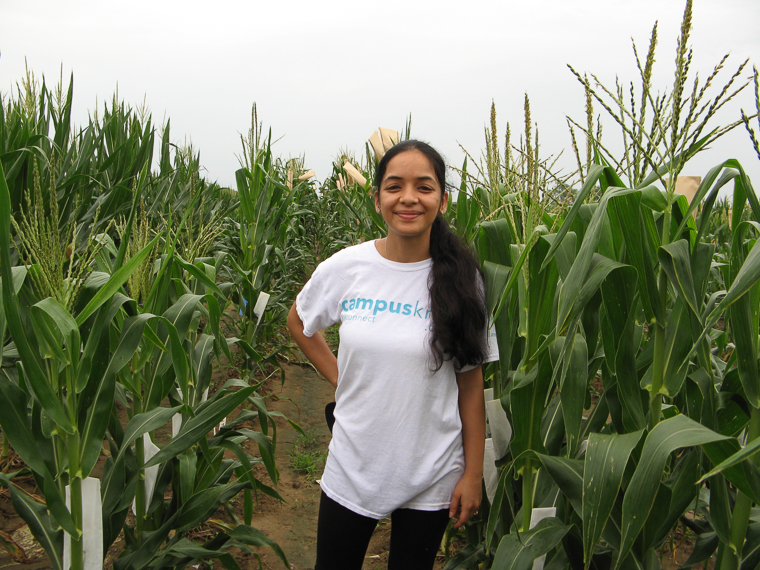The information presented on this page may be dated. It may refer to situations which have changed or people who are no longer affiliated with the university. It is archived as part of Mississippi State University's history.
AFLATOXIN CAN CAUSE some serious economic and health implications on a global scale. In fact, mycotoxins, including aflatoxin, cause an estimated $932 million in crop loss in the U.S. each year, with an additional average cost of $466 million to prevent and reduce contamination. The fungi known as Aspergillus flavus and A. parasiticus, which produce aflatoxin, can affect crops like grain and nuts. While strict screening measures are in place in the U.S., many of Mississippi's most profitable corn varieties remain particularly susceptible to A. flavus, resulting in an economic loss when aflatoxin strikes. Without a firm understanding of the genes that increase fungal resistance, corn will continue to be ravaged by this fungus.
Researchers at the Mississippi Agricultural and Forestry Experiment Station, or MAFES, have been hard at work identifying the various genes, known as WRKY genes, involved in Aspergillus resistance.
Recent graduate Akanksha Awasthi, who earned a master's degree in biochemistry, has spent the past few years cataloging the various ways WRKY genes present themselves in corn plants.
"Plants don't have immune systems the same way that we do as humans, but they are capable of protecting themselves if the genes that allow them to do so are present. In corn, it's the WRKY gene that serves as a watchdog and defends against Aspergillus fungi," Awasthi said.
Under the guidance of Dr. Xueyan Shan, associate research professor in the Department of Biochemistry, Molecular Biology, Entomology and Plant Pathology and MAFES scientist, Awasthi began by examining a corn inbred line known to show resistance against aflatoxin, an inbred line that had all the qualities of well-growing commercial corn but that was susceptible to aflatoxin contamination, and 15 offspring inbred lines that were nearly genetically identical to the well-growing parent, save for the presentation of various WRKY genes from the resistant parent. After hand-pollinating to ensure no other reproduction could occur, the crop was inoculated with Aspergillus and harvested in order to extract the DNA and protein.
By using polymerase chain reaction (PCR) and gel electrophoresis, Awasthi was able to identify sixteen polymorphic WRKY genes that were present in the crossbred corn hybrids.
"Being able to identify the WRKY genes means that we can use them as biomarkers for future breeding. Our results will go to our partners in the USDA, and they will be able to directly use them to breed specifically for aflatoxin resistance," Awasthi said.
Shan is equally excited about the prospects an aflatoxin-resistance biomarker would open up.
"Akanksha did good work here and put in a lot of hours, both in the lab and in the field. This is a fundamental step to developing corn hybrids that have all the desirable agronomic traits like early maturation, large ears, and drought tolerance, while also being resistant to aflatoxin," Shan said.
This research was funded by the National Corn Growers Association; the Aflatoxin Mitigation Center of Excellence Research Program; the U.S. Department of Agriculture, Agricultural Research Service; and the Mississippi Agricultural and Forestry Experiment Station.

